Our visit to New Jersey means we have now visited 49 U.S. States!
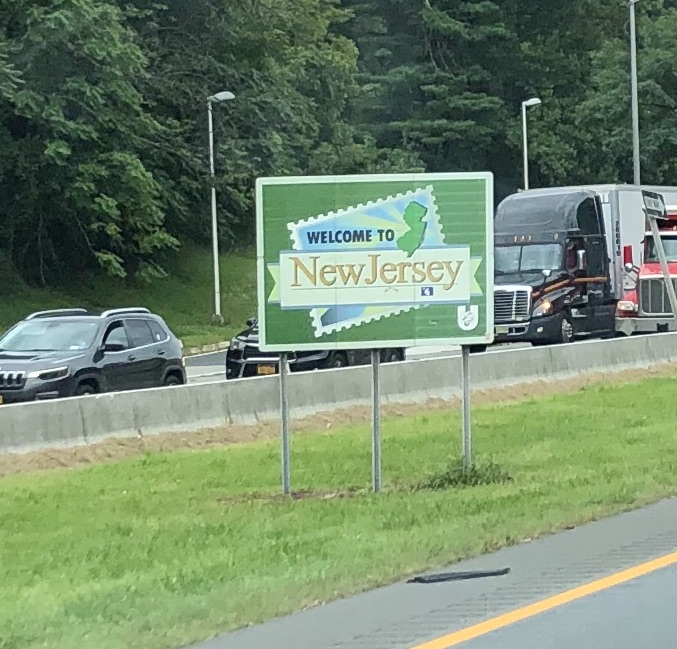
I’ve been to New Jersey before. I spent about 20 years working in the casinos in Las Vegas, NV, and during that time there were a couple of trips back east to Atlantic City to help out on company projects. However, Joel had never been, so we’ve never counted this as one of the states we visited.
On a side note, we recently had a discussion with another couple about how we determine what “counts” as a visit. For us, we only count places when we are both there – we must do more than sit in an airport or drive through on our way to some other place, often that means stopping to see something, or eat or drink someplace.
We began our time in New Jersey down at the shore, because, well, it was still warm in mid-September and that seemed like a good place to start. We drove through to the southernmost point, Cape May, and stayed at Shellbay Camping Resort.
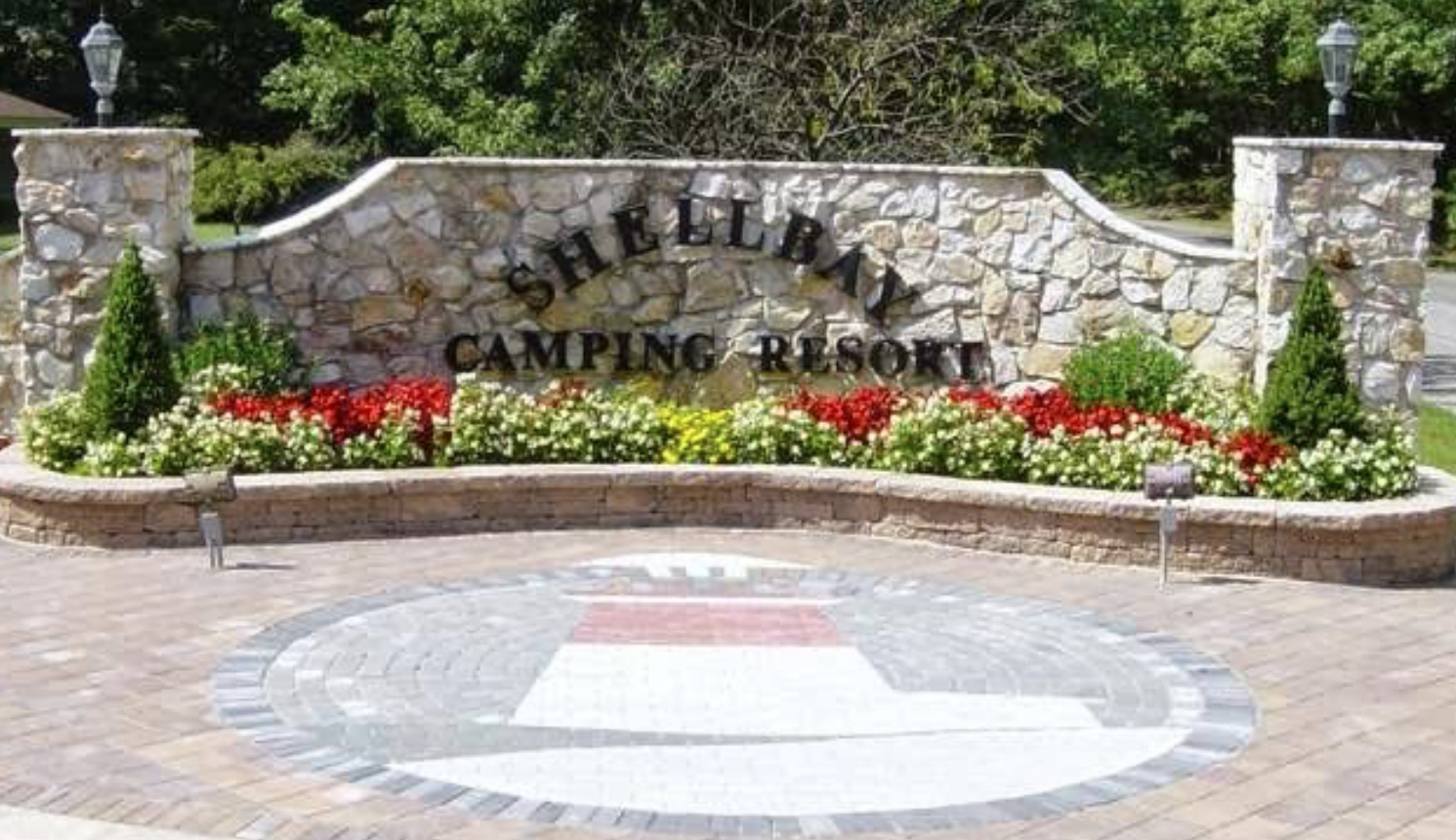
This was a very large campground with about 300 sites, most of them seasonal. We enjoyed our time here and started to feel the beachy-vibe right away since we were parked on crushed shells and beach sand.
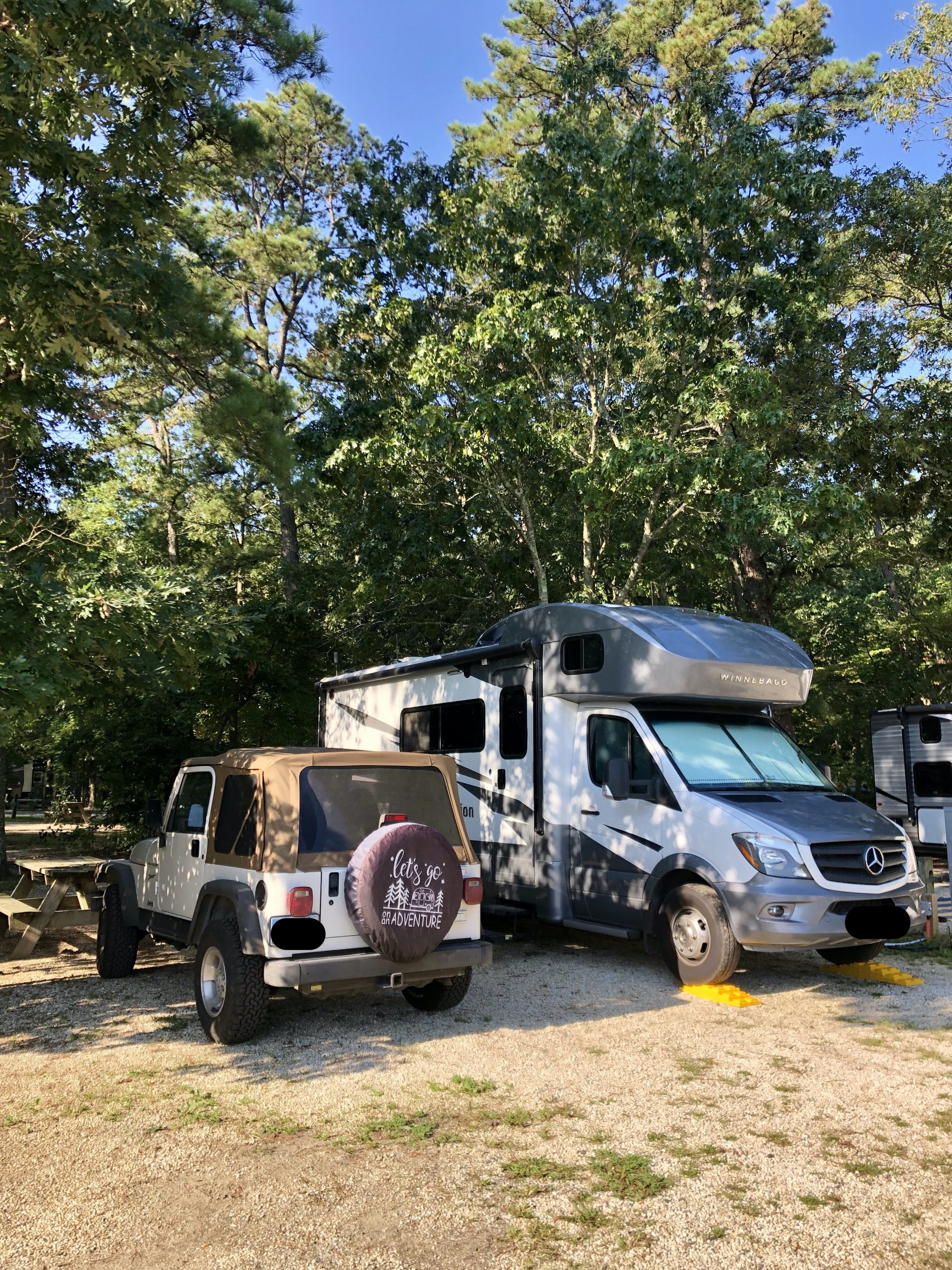
Our first stop was Cape May Point State Park to see the lighthouse.
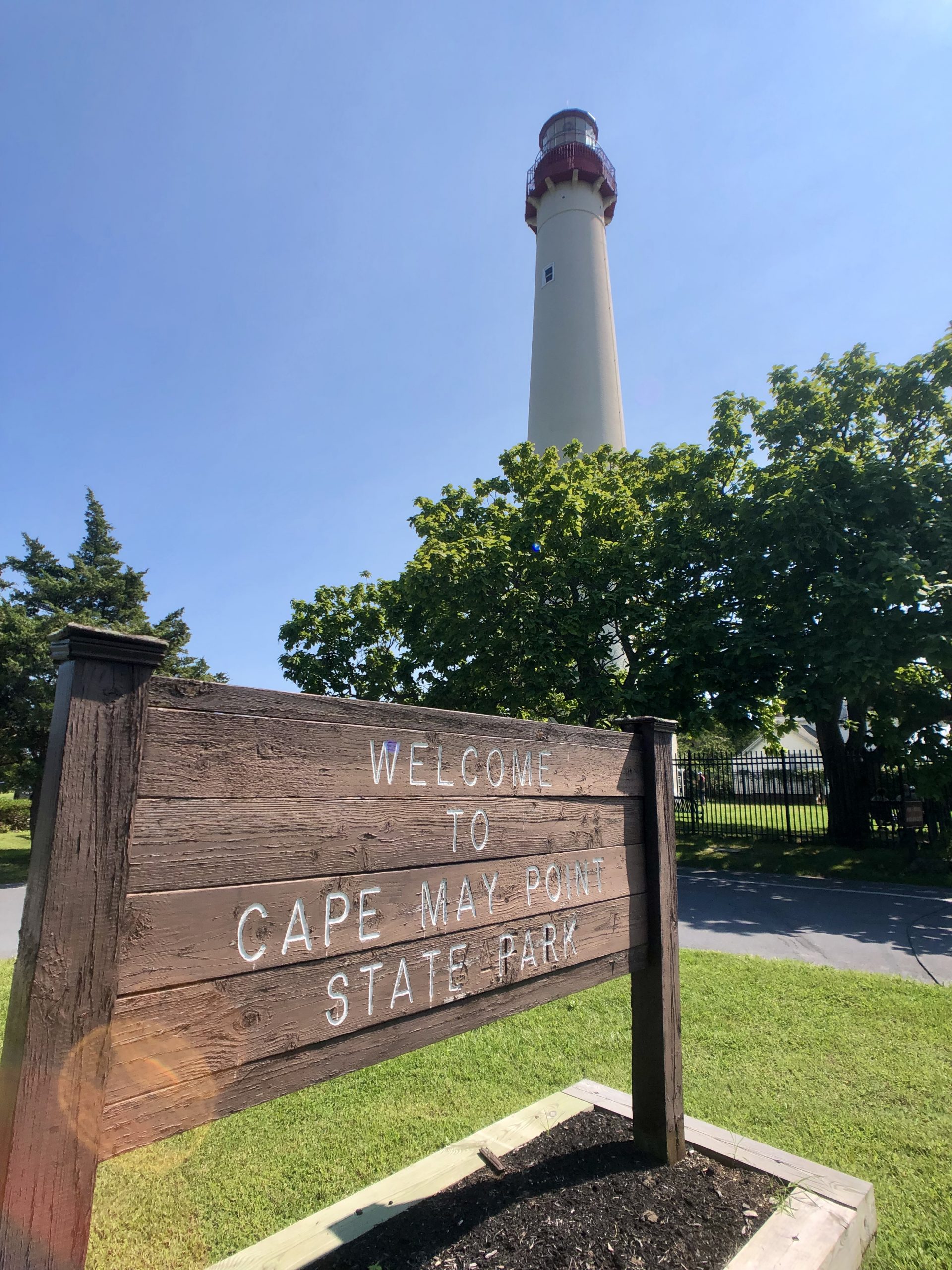
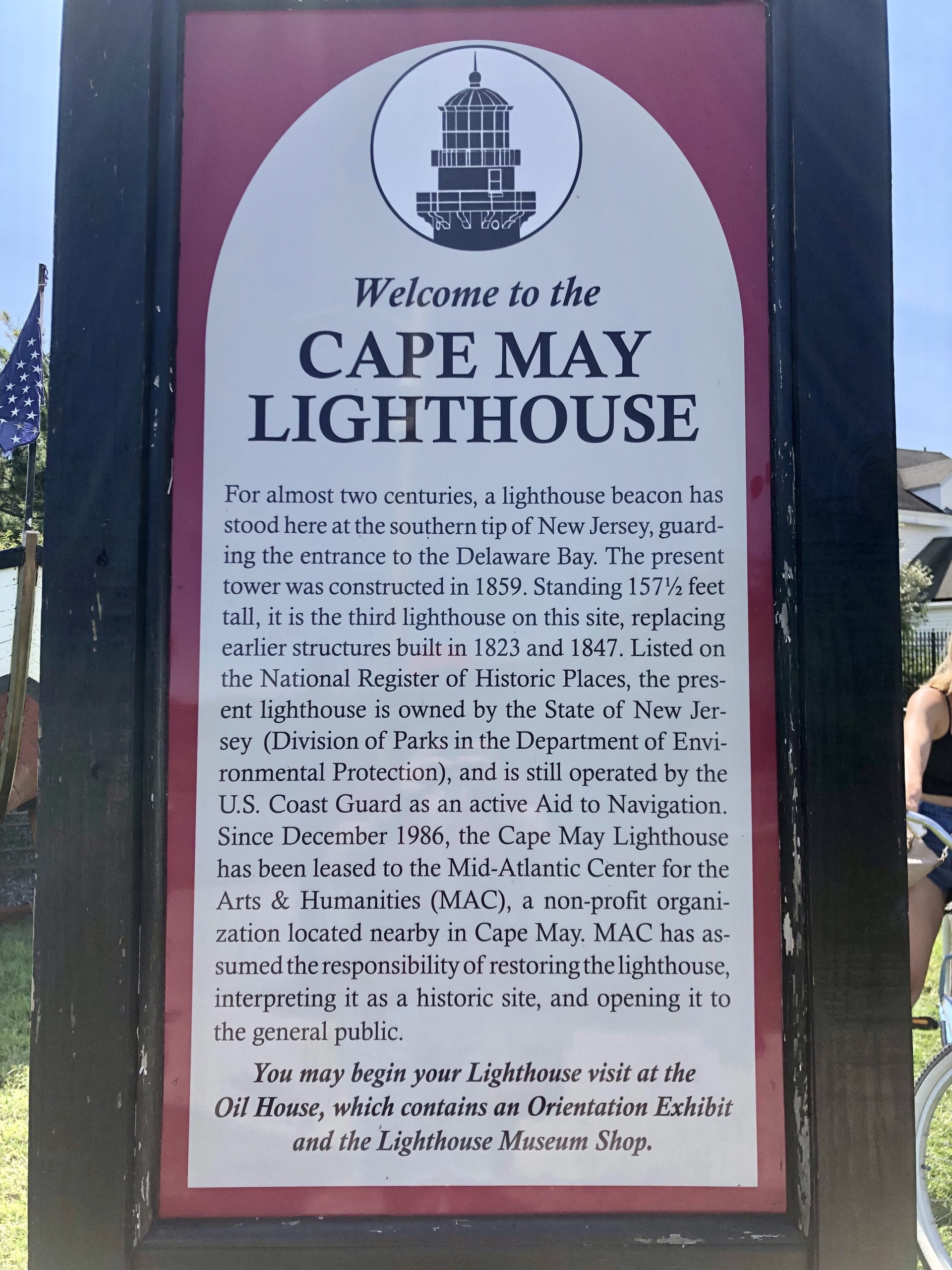
We didn’t take any tours (it was a bit crowded on the day we came) but we were still able to walk around to see the outside of both the lighthouse and the oil house.
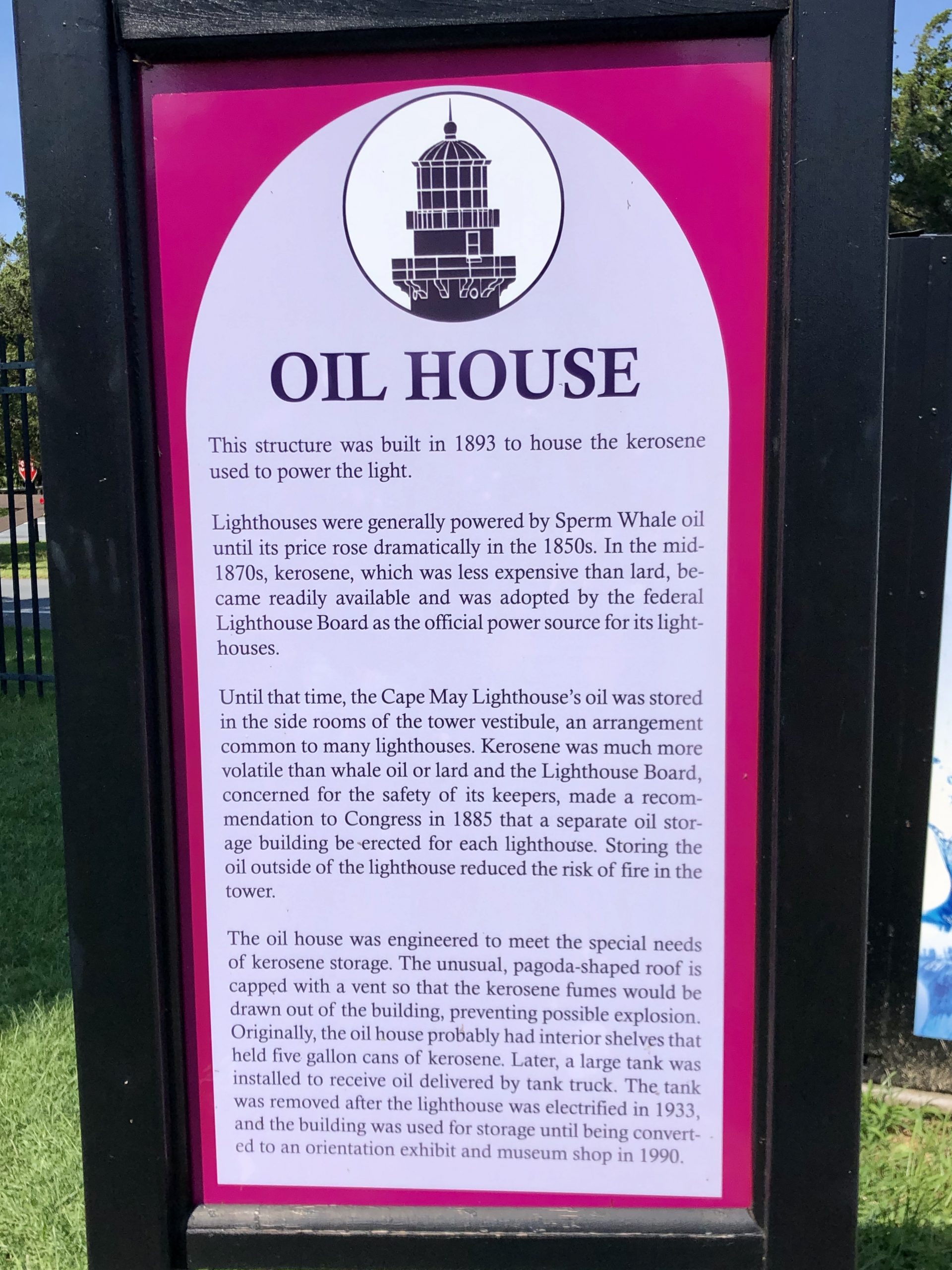
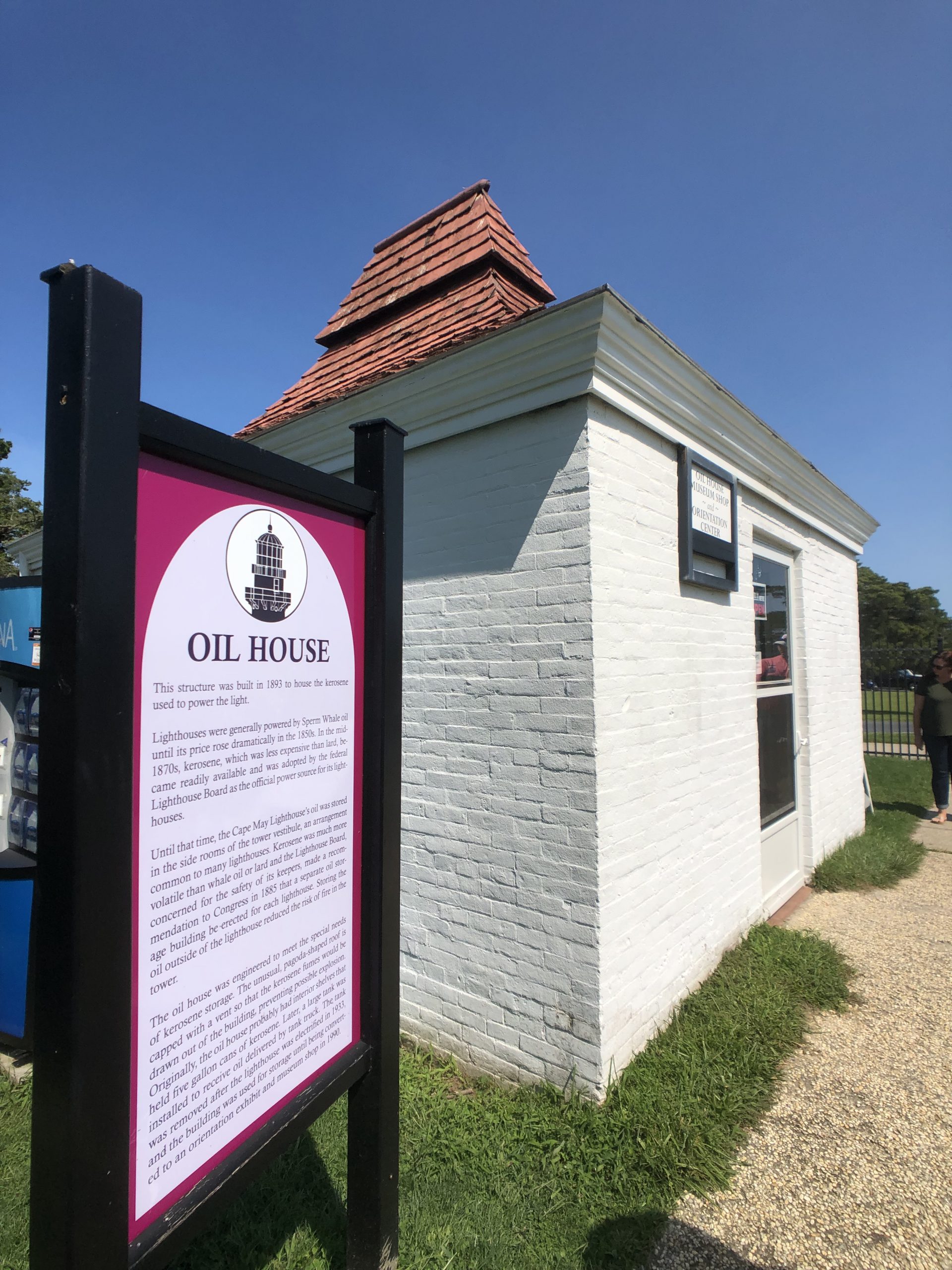
The state park also had a raised platform for viewing wildlife, primarily birds. While there we learned the sad history of how people came to Cape May and slaughtered migrating birds.
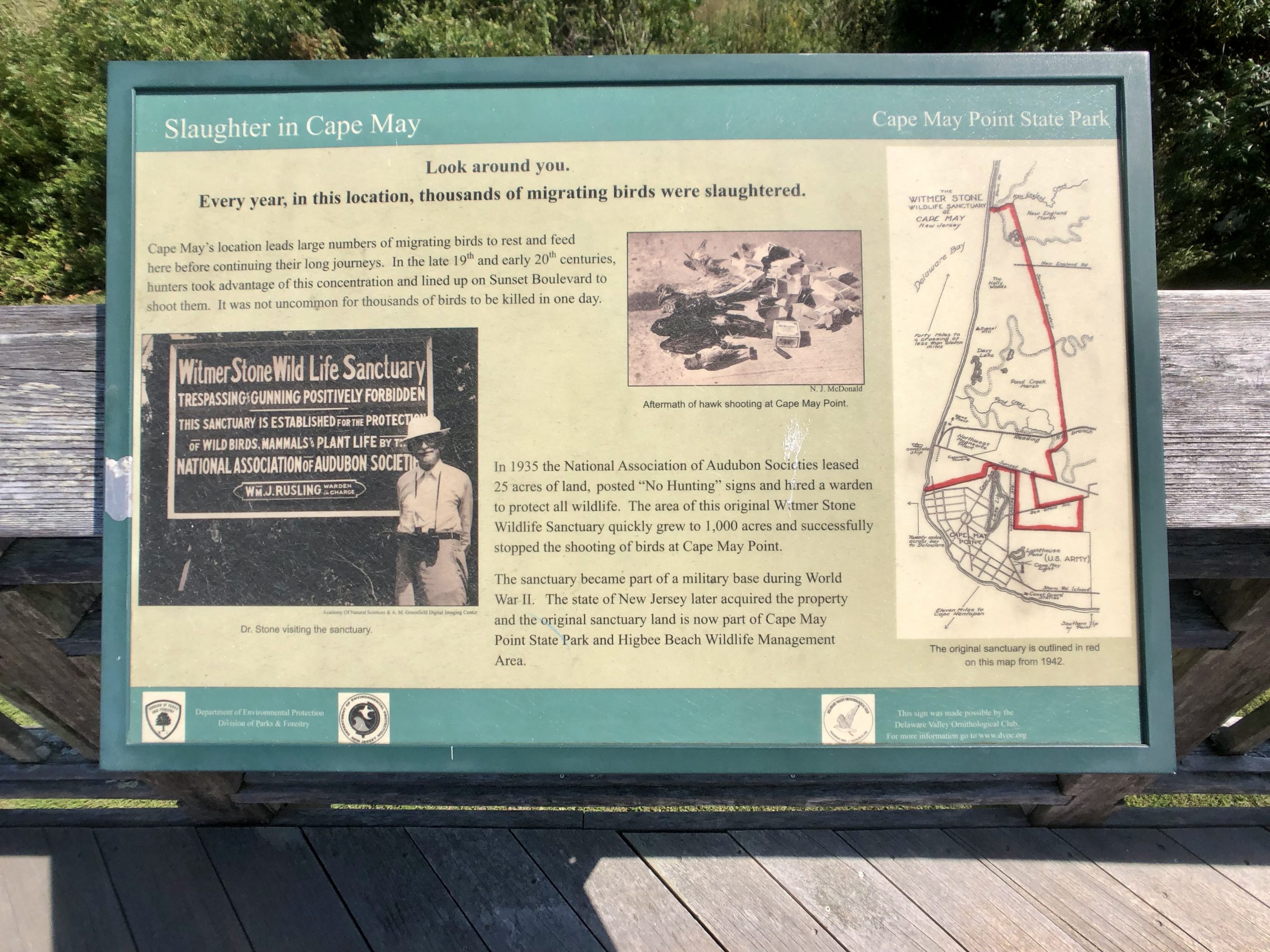
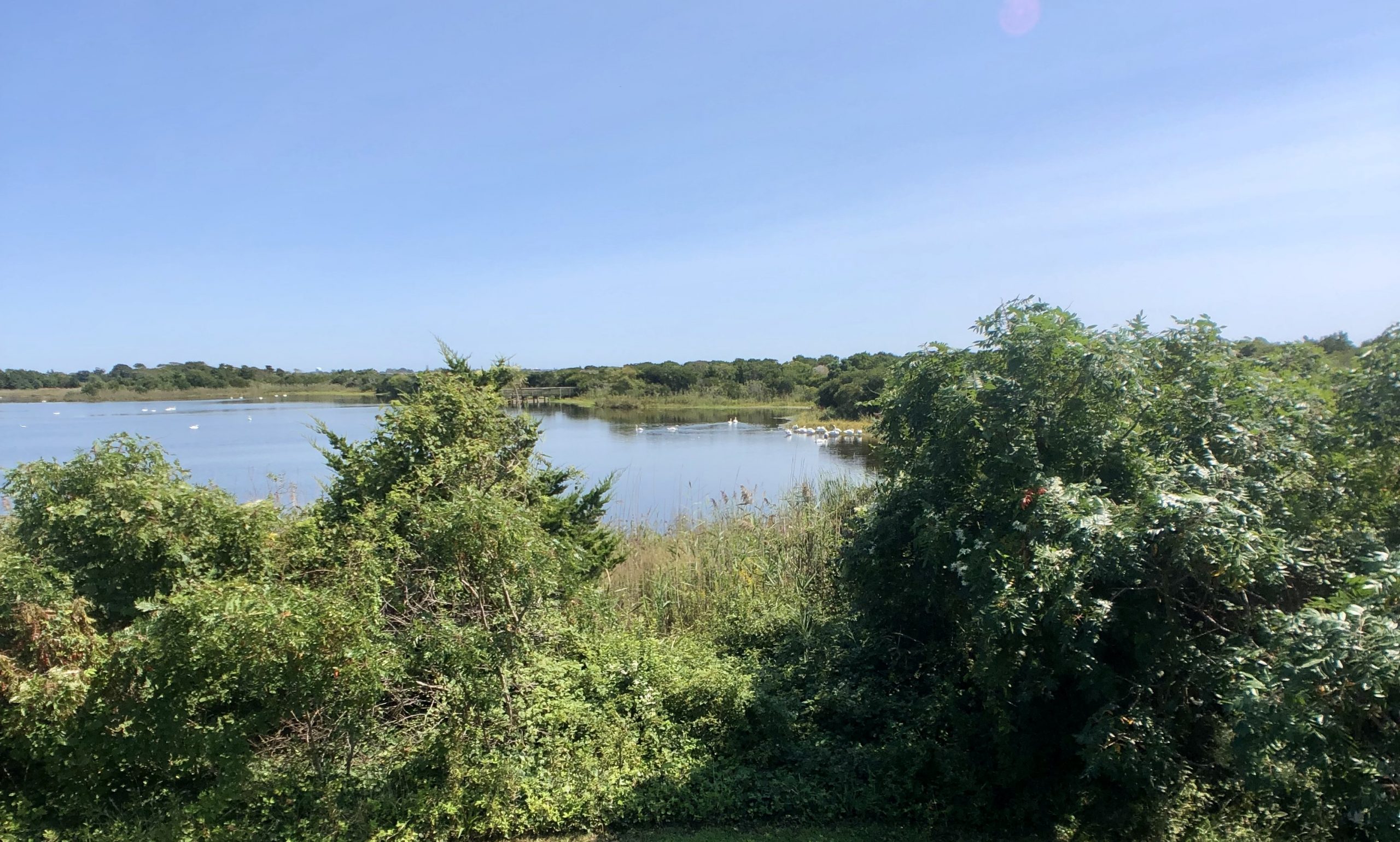
After the State Park we drove a short distance over to Beach Ave. to walk along the Promenade and see the seashore. We walked by a hotel that looked historic. At over 200 years old, Congress Hall in Cape May is America’s oldest seaside resort hotel.
“Congress Hall was first constructed in 1816 as a wooden boarding house for guests to the new seaside resort of Cape May; and the proprietor, Thomas H. Hughes, called it “The Big House.” Locals, thinking it too big to be successful, called it “Tommy’s Folly.” In 1828, when Hughes was elected to the House of Representatives, he changed the name of the hotel to Congress Hall. It burned to the ground in Cape May’s Great Fire of 1878, but within a year, its owners had rebuilt the hotel in brick.” – Wikipedia
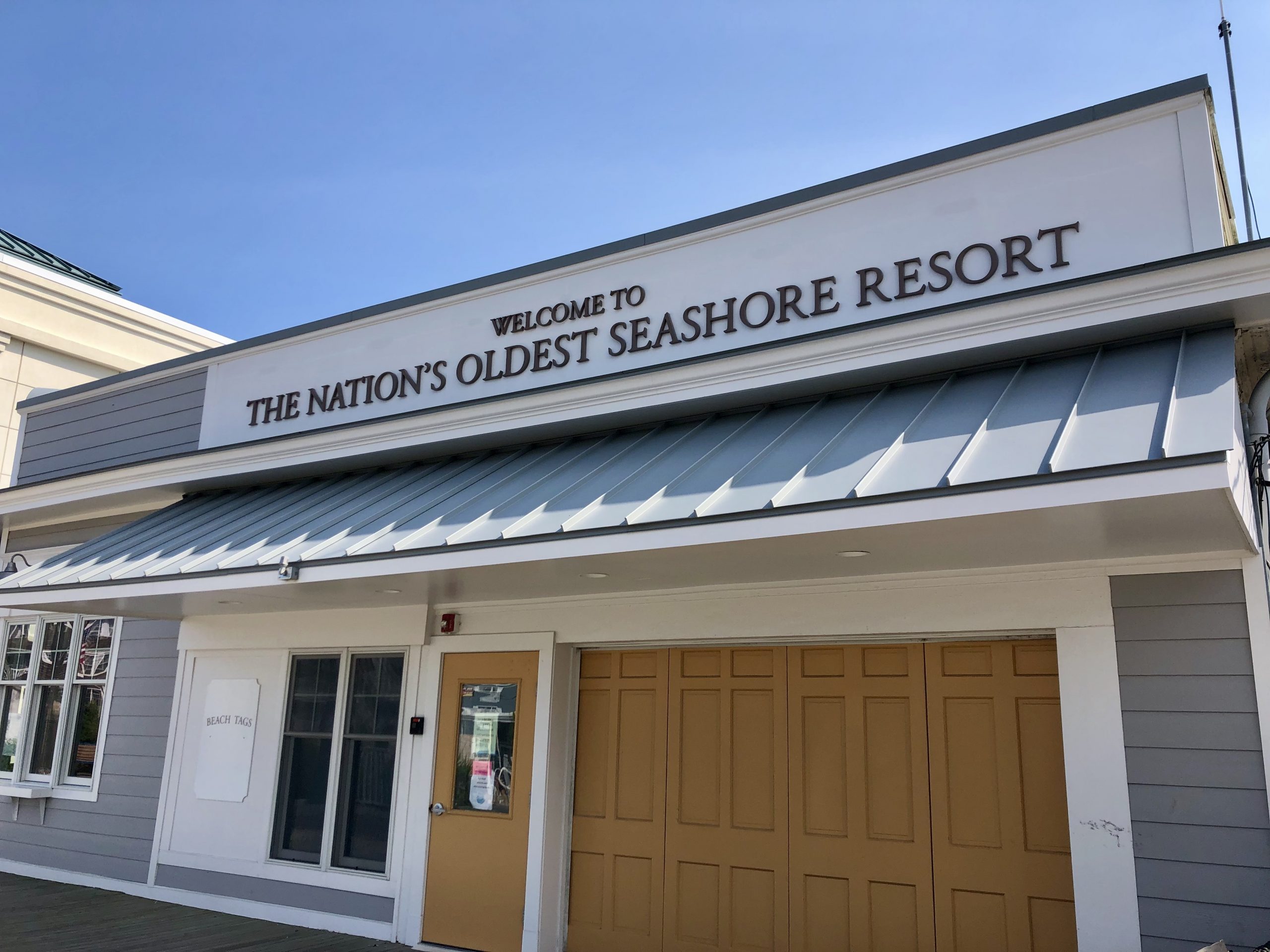
“While serving as President of the United States, Franklin Pierce, James Buchanan, Ulysses S. Grant and Benjamin Harrison vacationed at Congress Hall, and Harrison made Congress Hall his official Summer White House. It thus became the center of state business for several months each year.” – Wikipedia
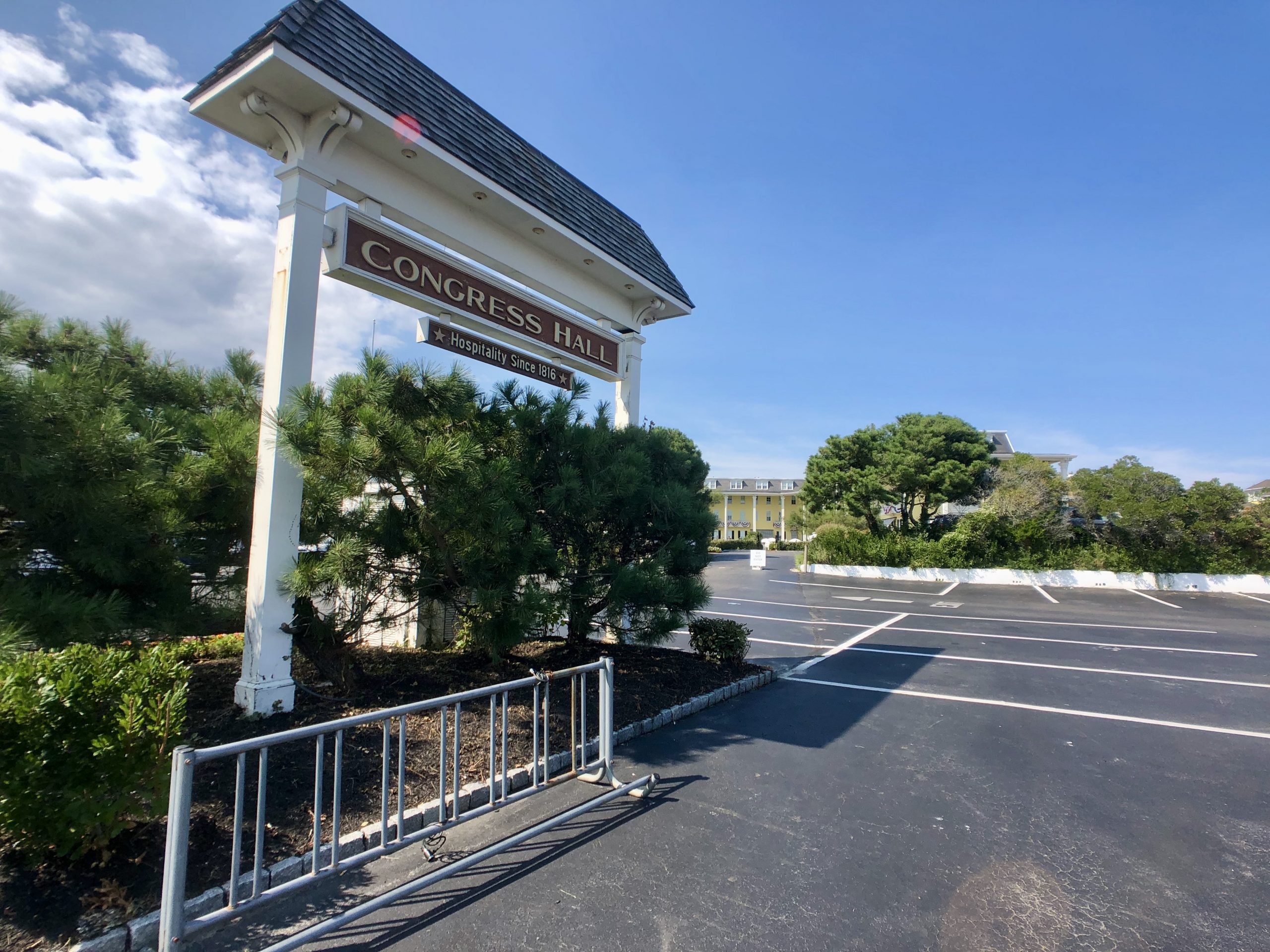
Directly across the street is the seashore. And two historical markers.
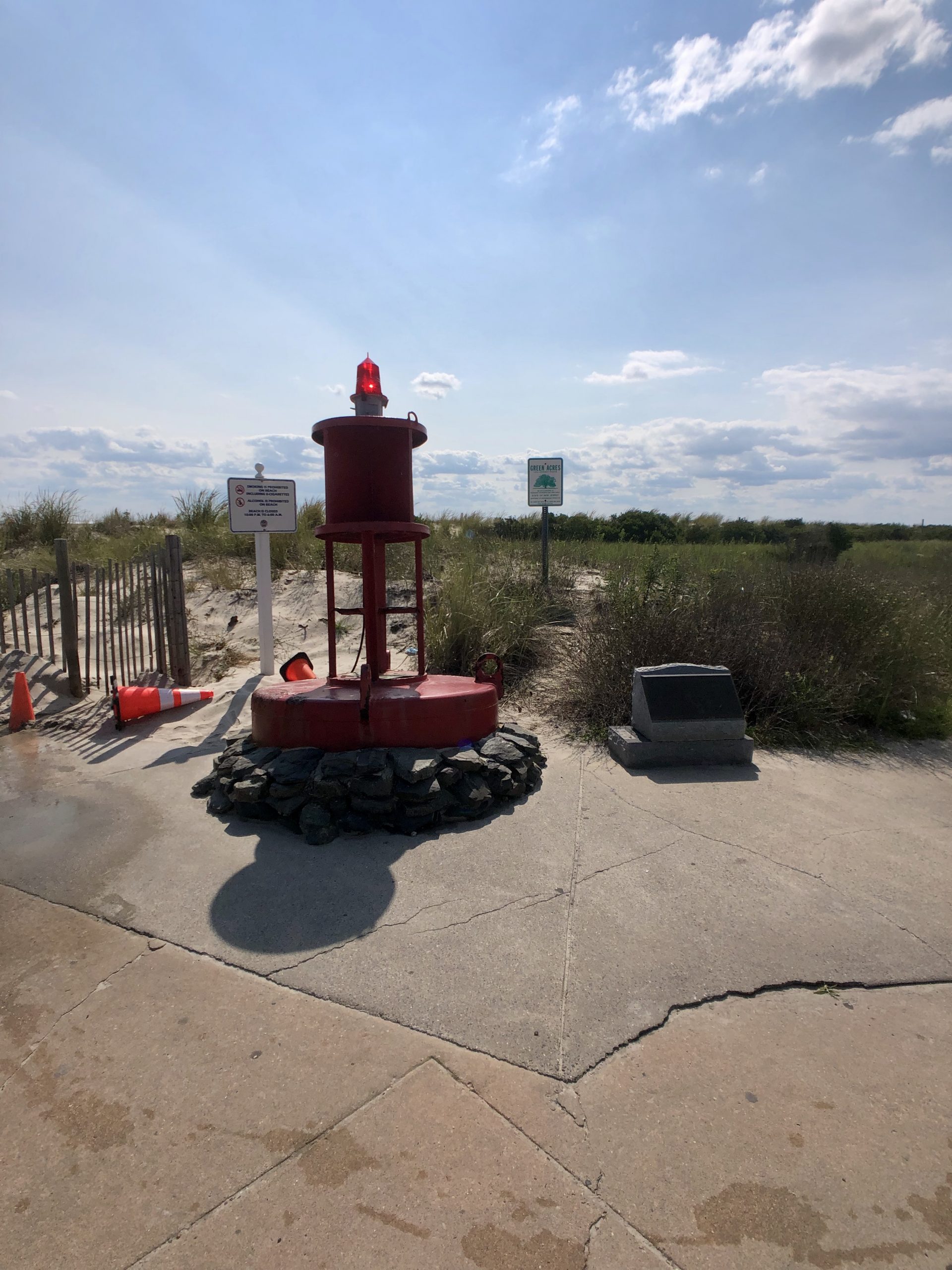
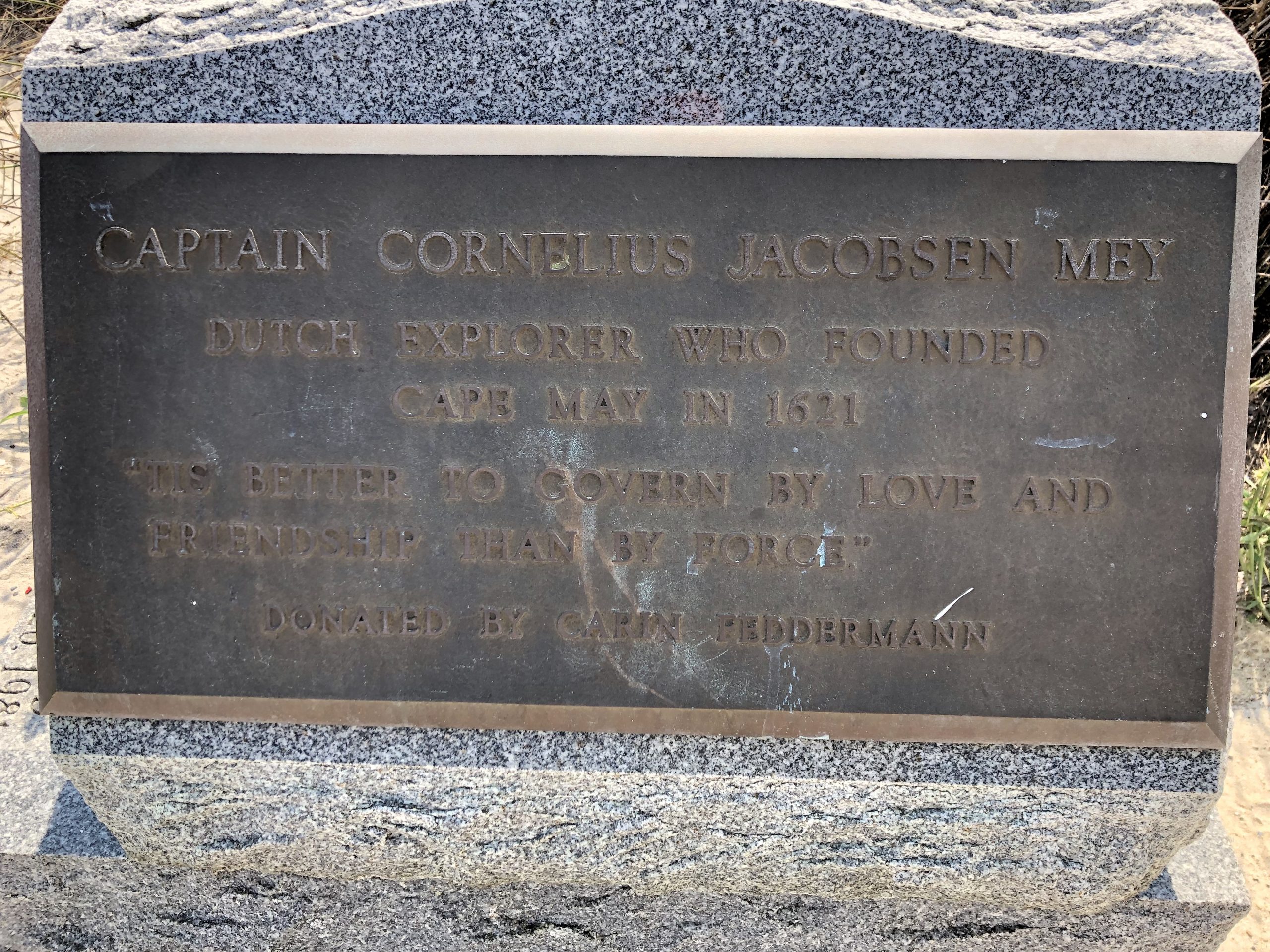
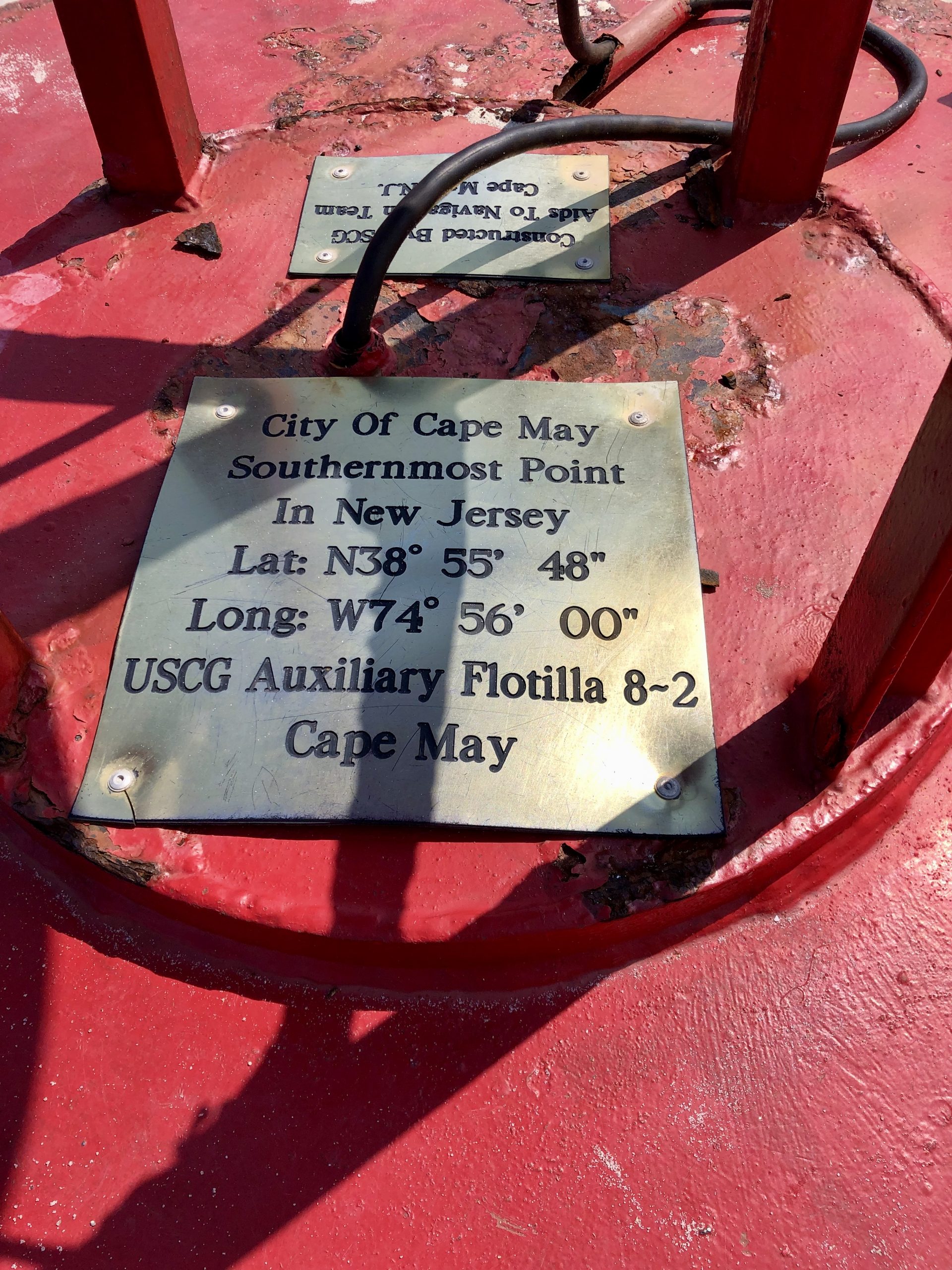
“The Jersey Shore (known by locals as The Shore) is the coastal region of the U.S. state of New Jersey. Geographically, the term encompasses about 141 miles (227 km) of oceanfront bordering the Atlantic Ocean, from Perth Amboy in the north to Cape May Point in the south.” – Wikipedia
The beach was much bigger than we expected.
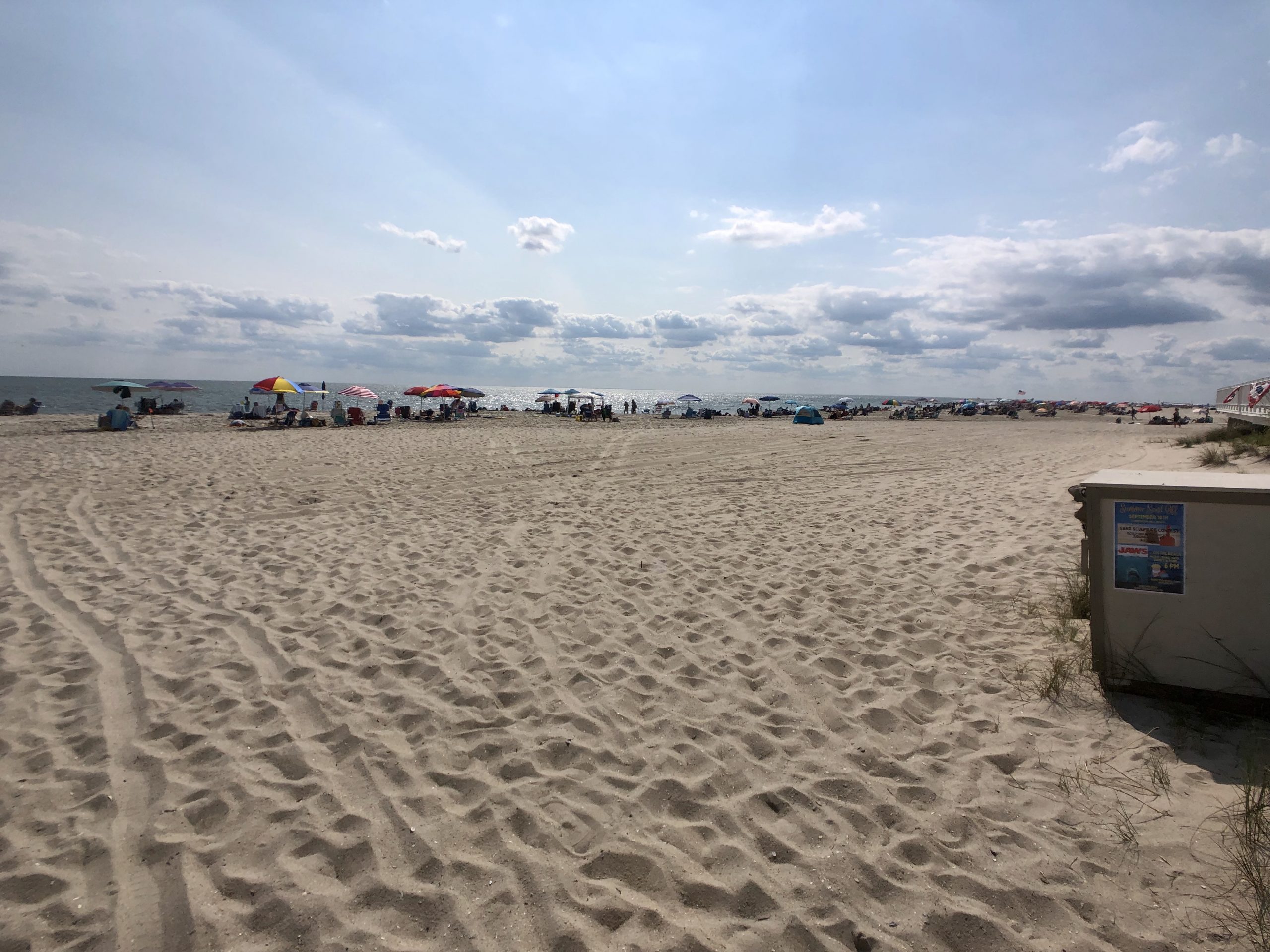
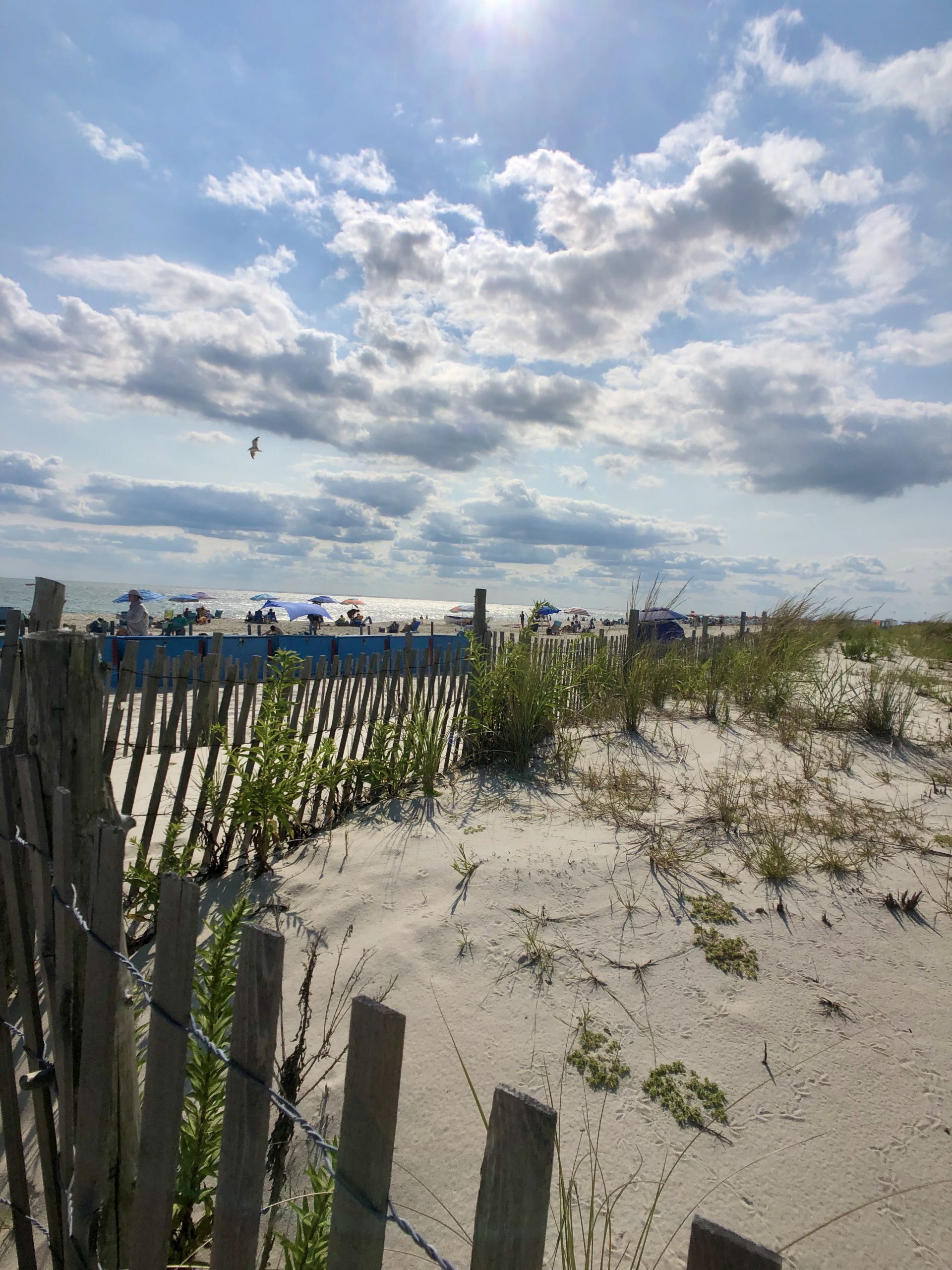
The water was chilly but after awhile (once your feet go numb) it felt nice.
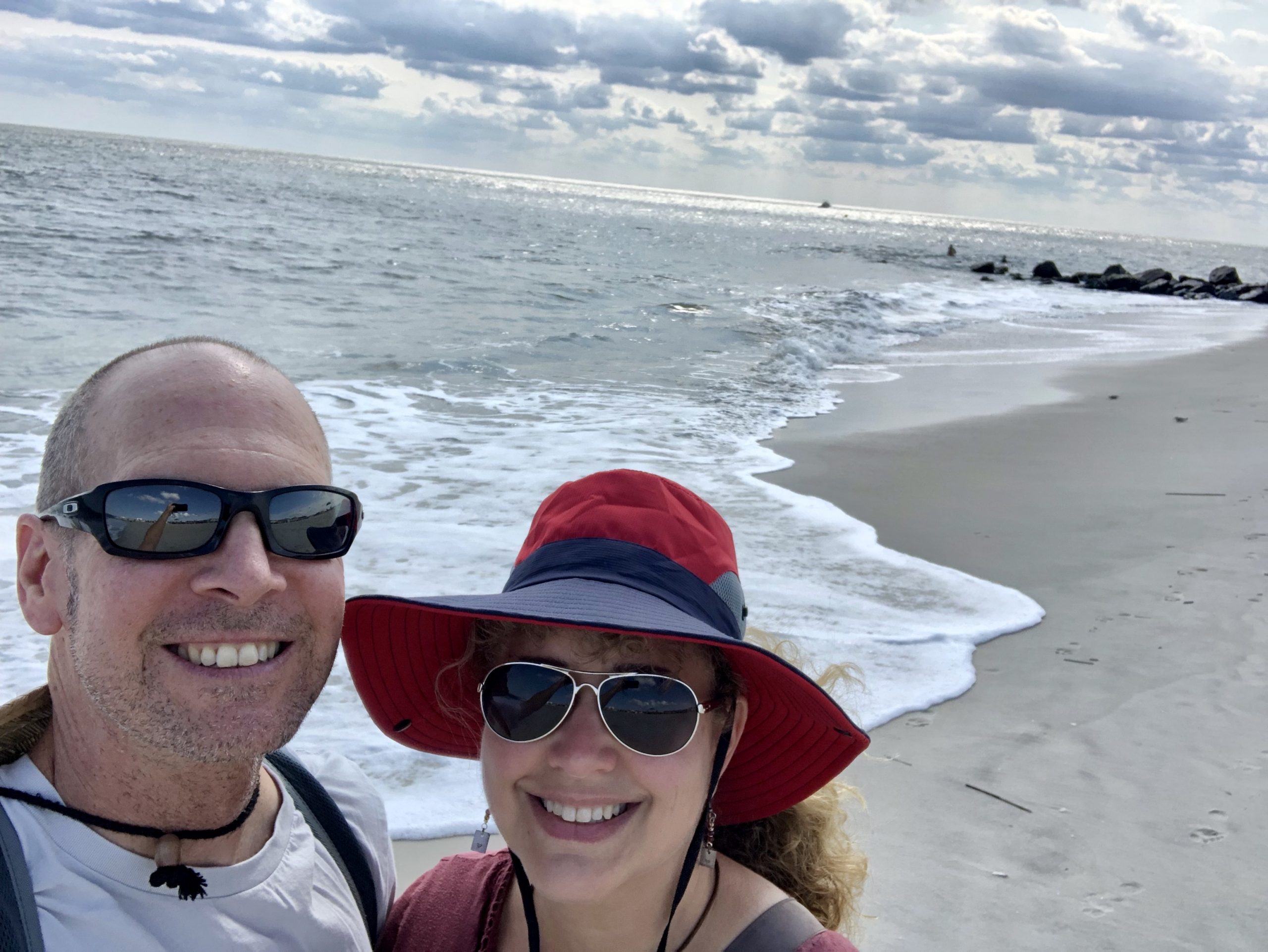
We decided to end our day by tasting some wine. There are several wineries in the Cape May area and we picked one at random. Boy did we get lucky. The wine was excellent. “Turdo Vineyard & Winery is a winery in the North Cape May section of Lower Township in Cape May County, New Jersey. The vineyard was first planted in 1999, and opened to the public in 2004. Turdo has 5 acres of grapes under cultivation, and produces 1,100 cases of wine per year.” – Wikipedia
“Turdo Vineyards is a family owned and run operation. It all begins with Sal(vatore Turdo), he is the owner, as well as master wine maker. His vision, commitment, and determination is what turned just over 5 acres of woods he purchased over ten years ago, into a very successful fully operational vineyard and winery. It took a lot work and time, not only from Sal, but from his family to make Turdo Vineyards what it has become. His wife Sara, and son Luca have been behind Sal, helping him from the beginning.” – Turdo Vineyards
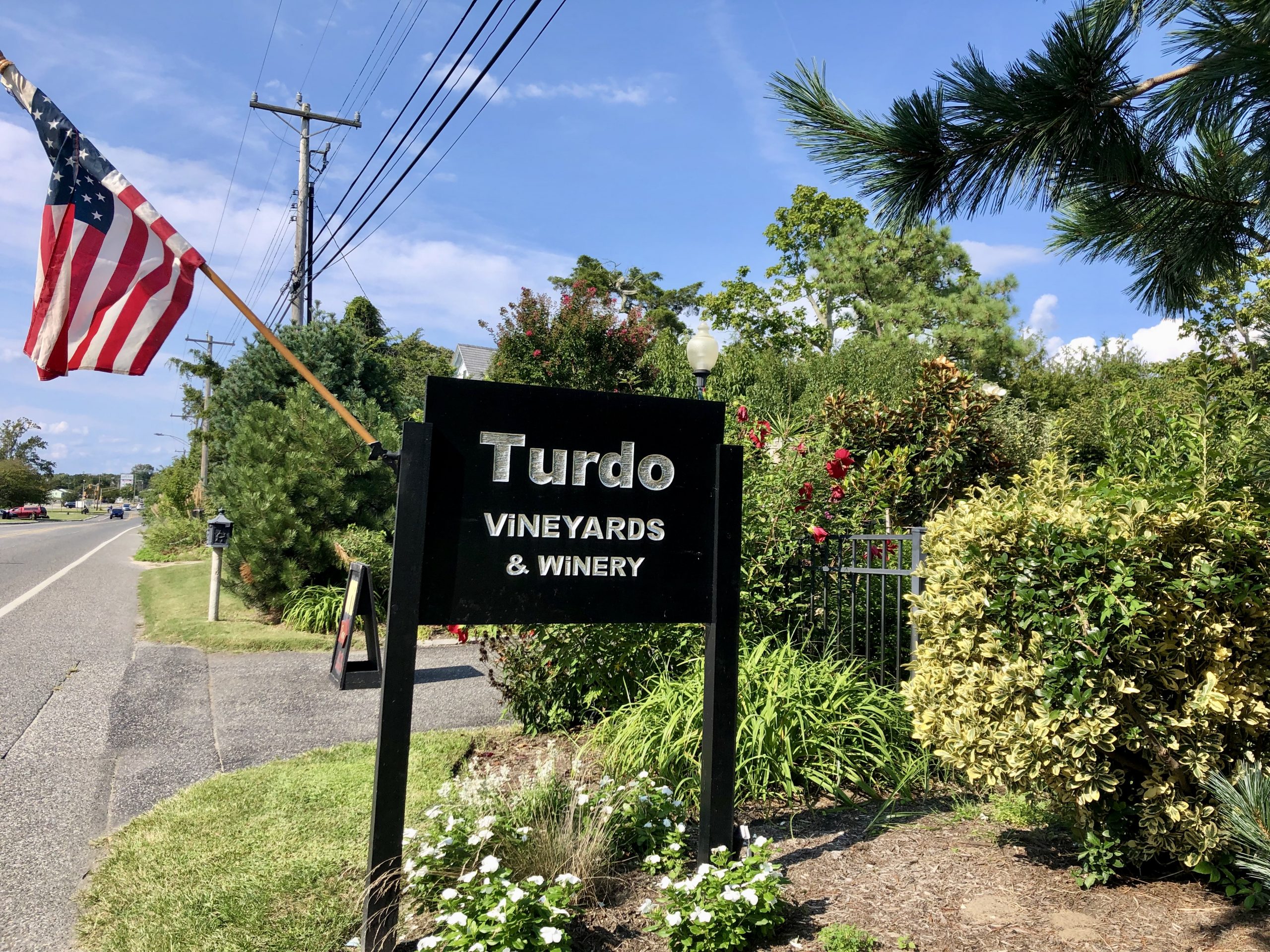
We were lucky enough to have Sal pour our tasting. He explained to us why he chose Cape May and what makes the wine so good here. “Cape May was chosen because of its proximity to both the Atlantic Ocean and Delaware Bay, creating a microclimate that is perfect for growing vinifera grapes. Therefore, the grapes grown in this vineyard enjoy a more leisurely ripening process with longer hang time on the vine. Cape May has close to 6 extra weeks of grow season compared to northern and central New Jersey.”
We bought a couple of bottles and have already shared one with some family members we stayed with in Washington, D.C. (more on that in another post). They declared the wine very good as well.

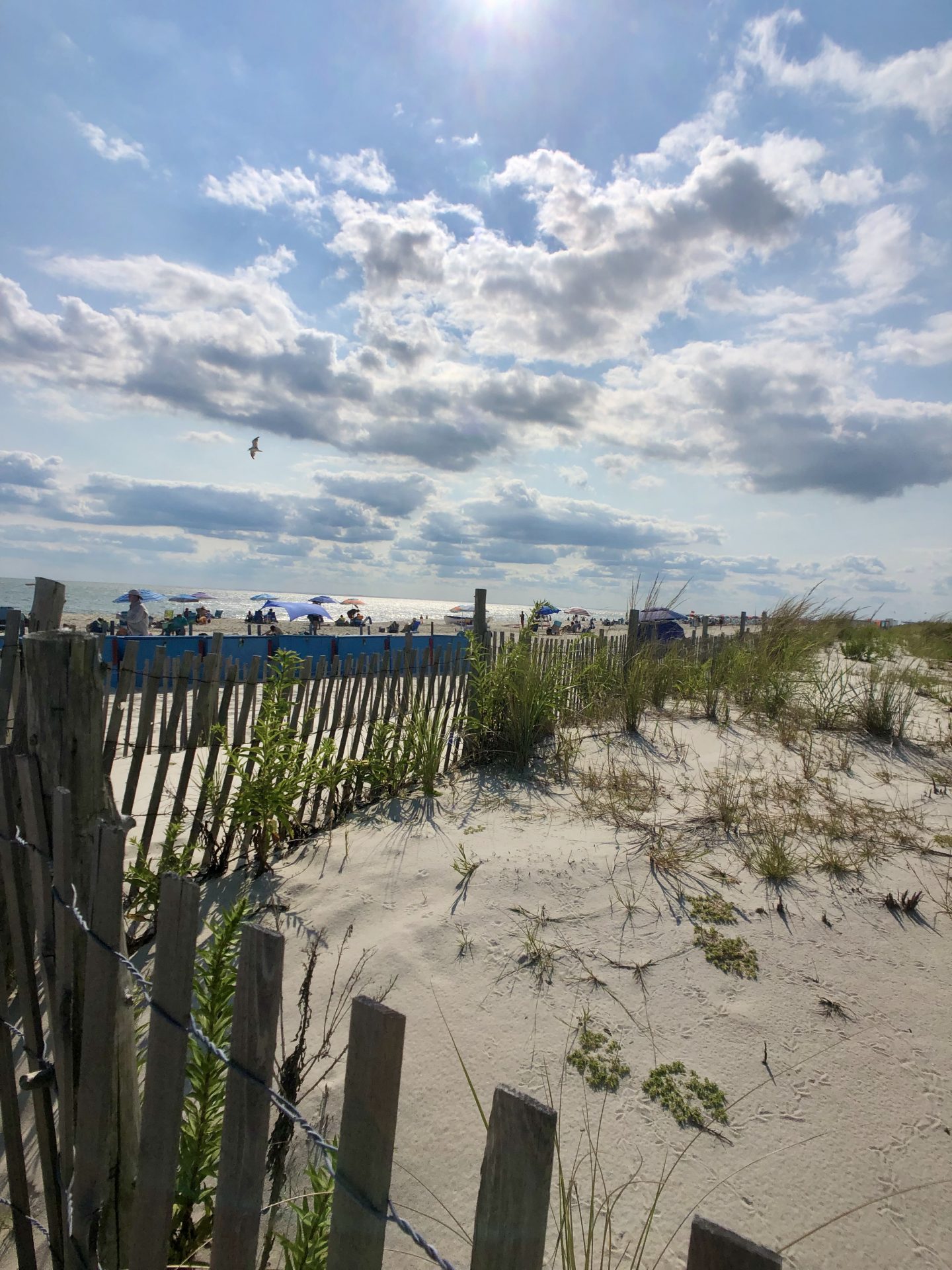
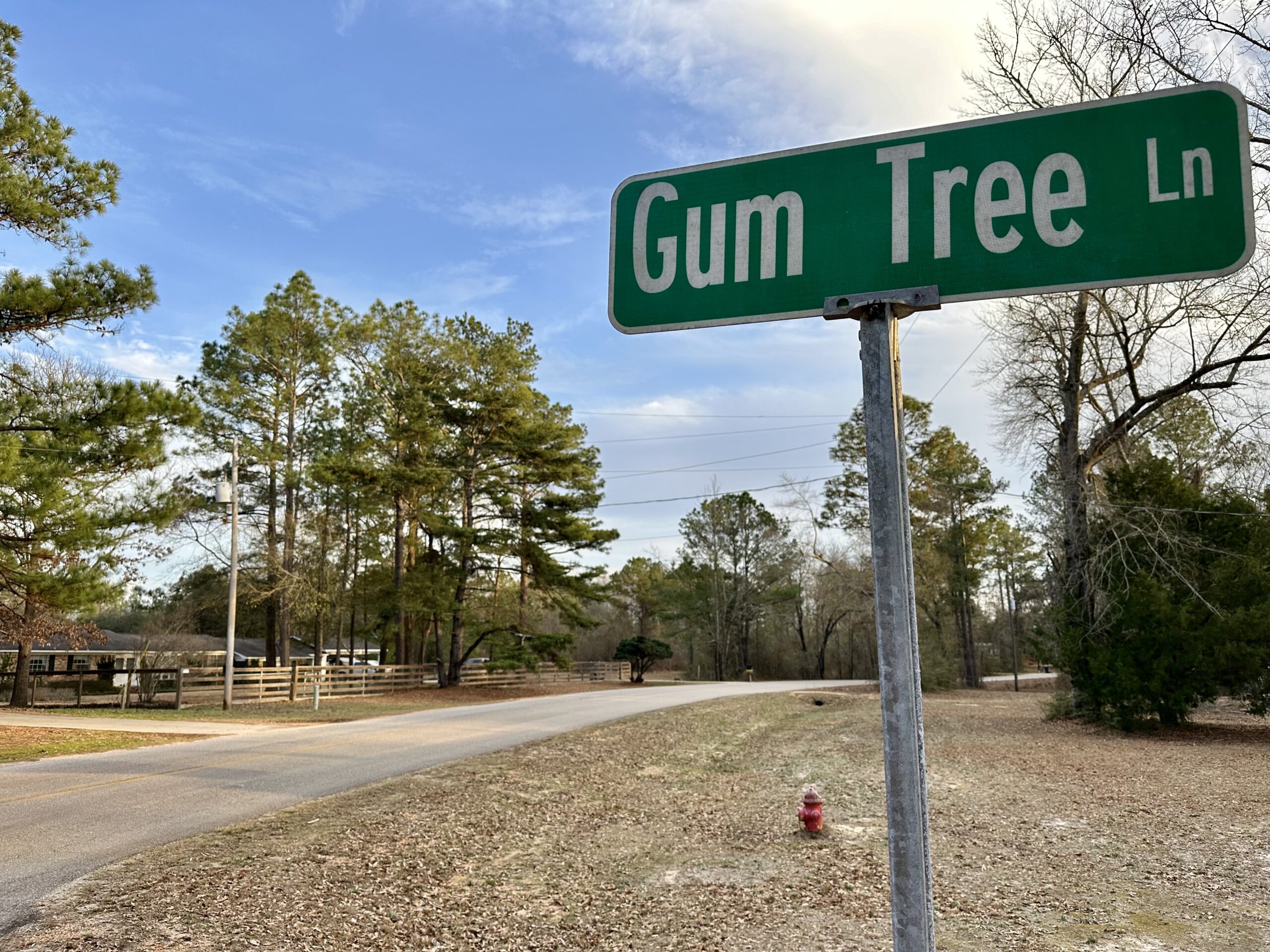
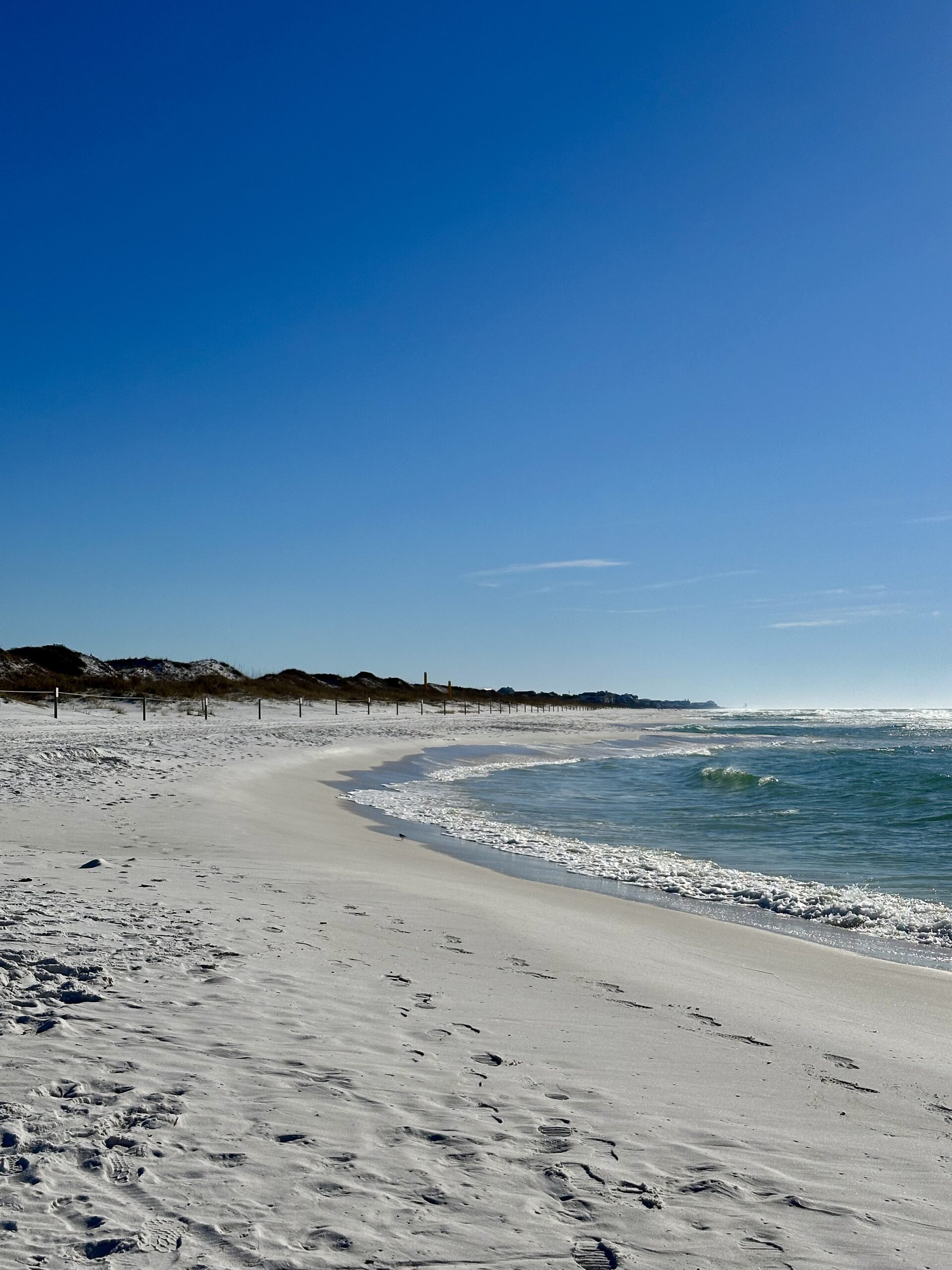
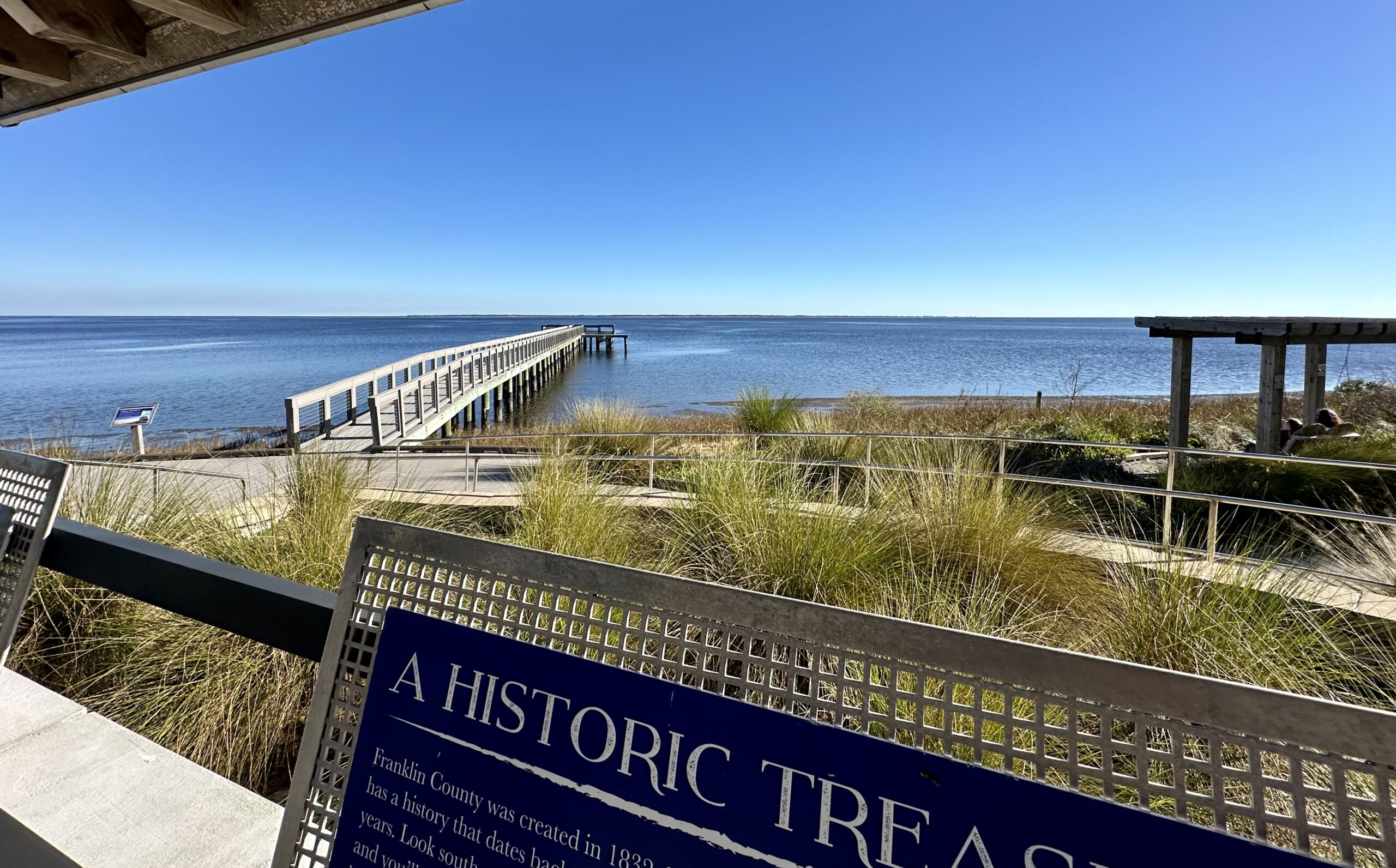
Glad you folks are having a great time. Your visit to Cape May looks like you got to see some interesting places. Rita, Anne and I were back at Bishop’s today for Anne’s birthday.